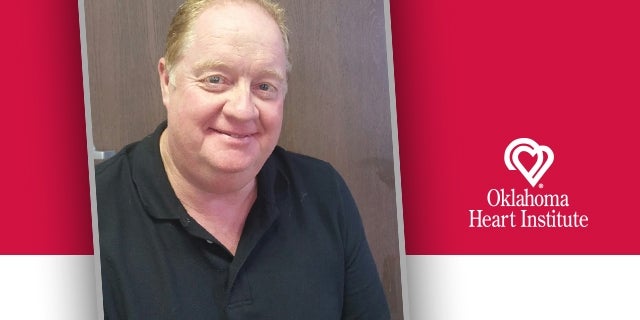“I told the guys I would be back in two hours,” 53-year-old Bill Calkins remembers telling his crew at work as he left for his annual physical in Skiatook. The project manager of a superfund site stayed up-to-date on his physicals and felt in pretty good health walking into the clinic. “If anything, I noticed I was slightly short of breath.” Going over his blood results, Bill’s primary care physician was wrapping up the appointment, when he asked, “Hey Bill, you’re in your mid-50s. When was the last time you had an EKG?” Bill thought the last time would have been when he was in the service in his 20s. Instead of going back to work, Bill ended up going to the hospital.
The EKG sparked concern for his physician, who referred him to Oklahoma Heart Institute at nearby Bailey Medical Center. “When I pulled up and there was the Oklahoma Heart Institute sign, truthfully, I felt better,” Bill recalls. “They are the people who deal with this all the time, I thought.”
Stress Tests and Surgery
Oklahoma Heart Institute cardiologist Dr. Roger Des Prez ordered a stress test for Bill. “I couldn’t do it,” he says. “I failed it.” Bill also failed a nuclear stress test. Something was clearly wrong with Bill’s heart, even though he wasn’t showing the classic signs of a heart attack – chest pain, numbness down the left arm or breaking out in a cold sweat. Bill was scheduled for a heart catheterization to get a more clear indication of what was going on with his heart the next day at the Oklahoma Heart Institute hospital on the campus of Hillcrest Medical Center in Tulsa.
During the catheterization, images of Bill’s heart revealed a 98 percent blockage in the main LAD (left anterior descending) artery, which supplies blood to the front and main wall of the heart. “I’m a walking miracle,” my surgeon, Dr. Edward Coleman, told me. “No one walks in here with a 98% blockage of the widow maker.”
To prepare for open heart surgery, Bill was hospitalized for 8 days coming off blood thinners. “I was terrified,” he remembers. “You have a lot of time to think and read. I did a lot of research.” Dr. Coleman and Dr. Des Prez monitored him closely leading up to surgery. Bill says the best description he had of what his 98% blockage meant to his heart was from Dr. Coleman. “He said your arteries are like hoses in a garden. One waters the green beans. Another one waters the cabbage. ‘Bill your whole garden is blocked,’ Dr. Coleman said.”
The surgery was successful and Bill woke feeling sore, but with a new lease on life. “Everyone took exceptional care of me,” he adds. “I felt pretty important up there.”
Cardiac Rehab
Upon discharge, Bill was referred to the cardiac rehabilitation program at Hillcrest Claremore, near his home. For 12 weeks, 3 times a week, he arrived for monitored exercise, which is when cardiac nurses and exercise physiologists watch his blood pressure and heart rate as they gradually strengthen his heart and endurance. “I was pretty weak and now at the end of 12 weeks, I’m setting records on the machines,” he says. “I give it my all. I feel safe there, but I was really worried, thinking, ‘what if something goes wrong?’”
In addition to exercise, Bill has learned valuable information about his heart medication, as well as changes he needed to make to his diet and portions. “I was making bad choices thinking they were good.”
Mid-September Bill happily returned to work. “I never dreamed I could recover so fast,” he says. “Sure, it is tough. There are long days and it reminds you every minute that you’ve had heart surgery, but I have had a complete transformation of my health. The follow-up is as good as the care itself. I have never felt alone one day.”

